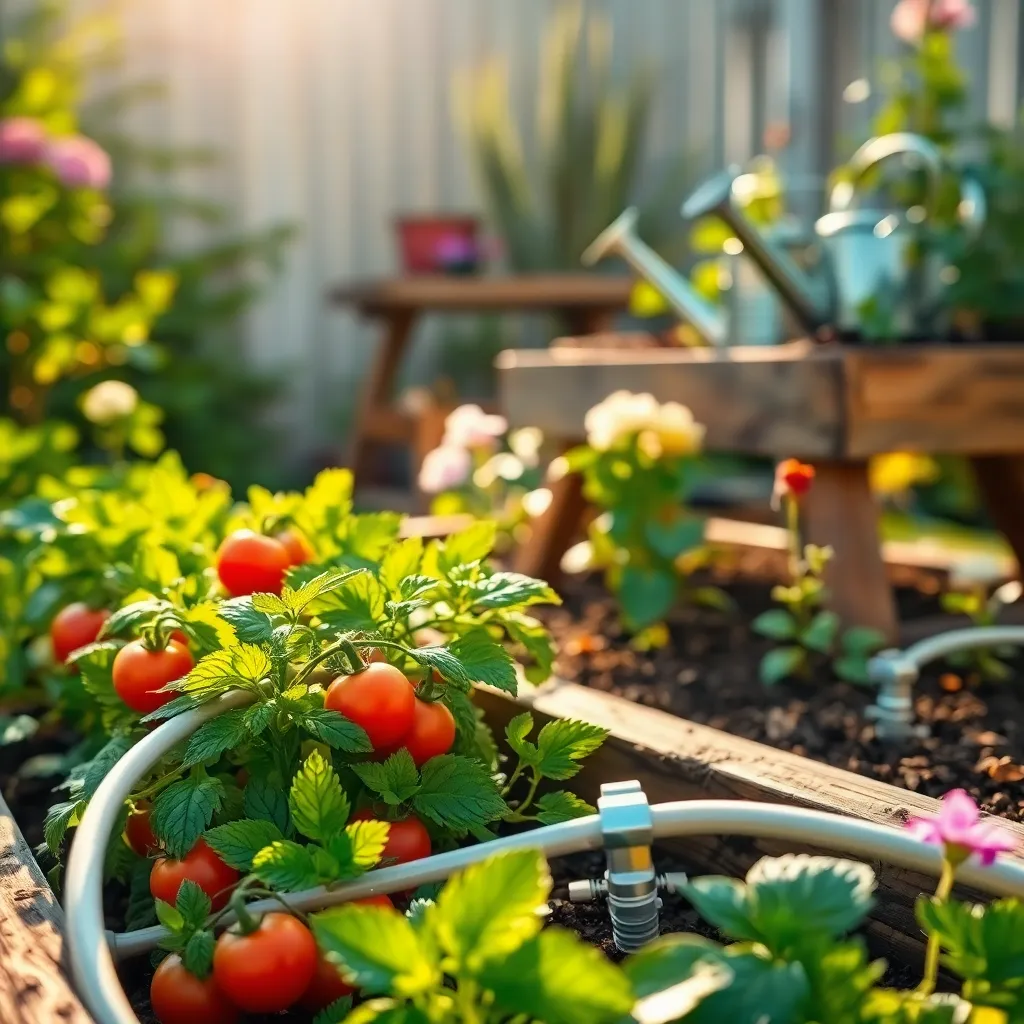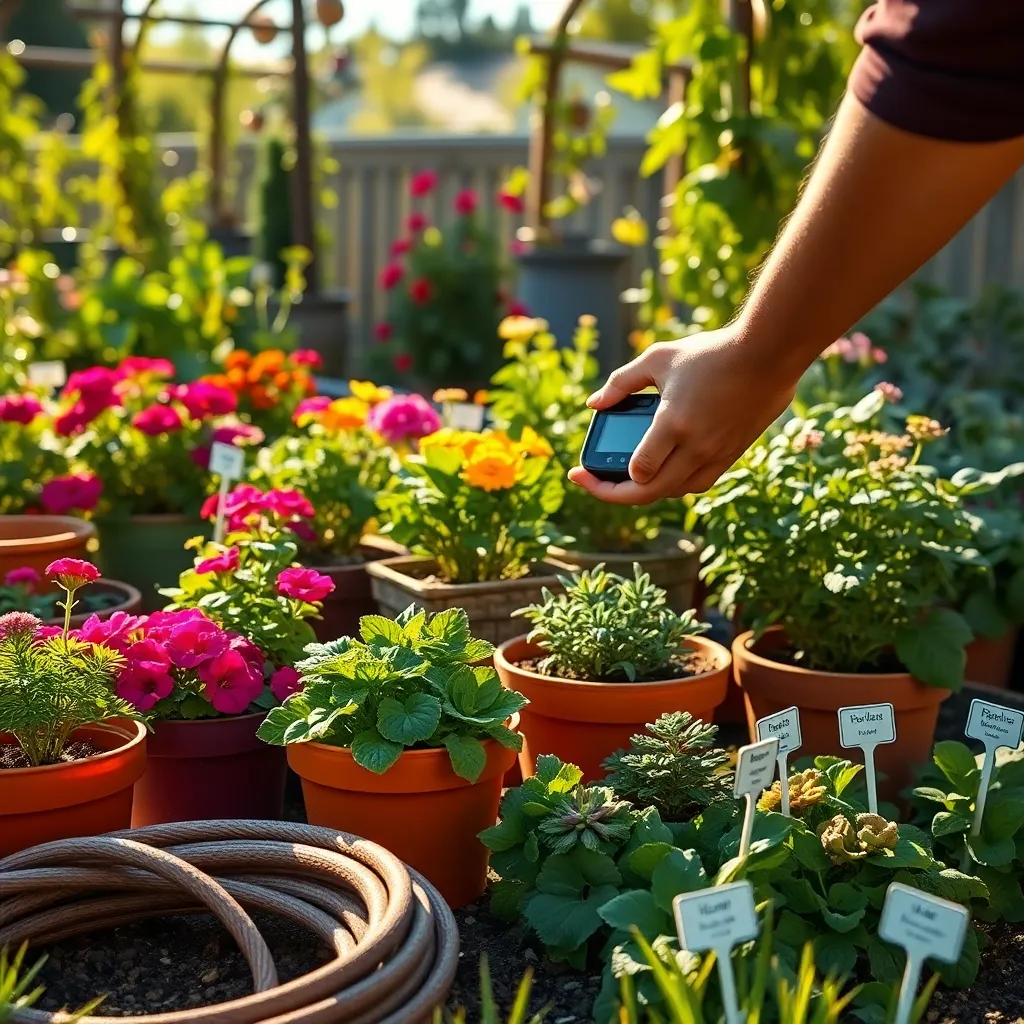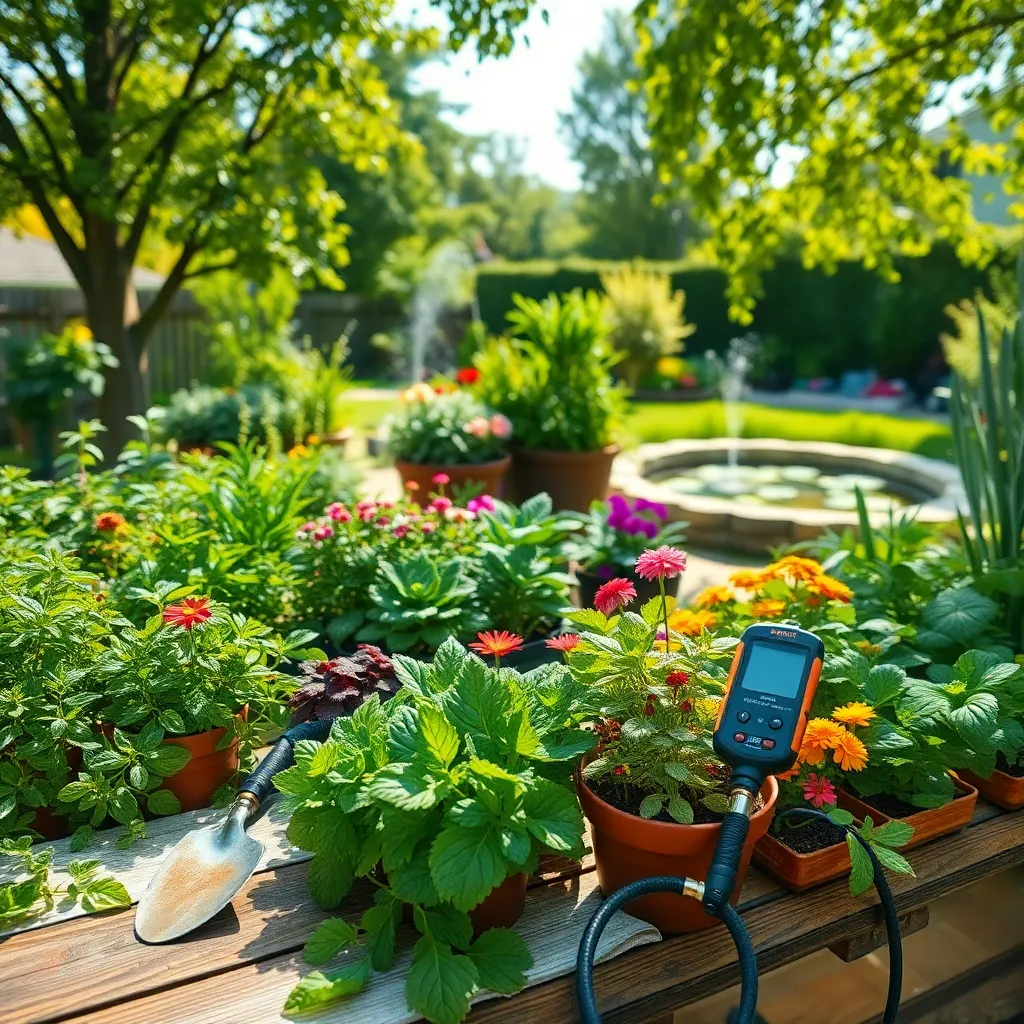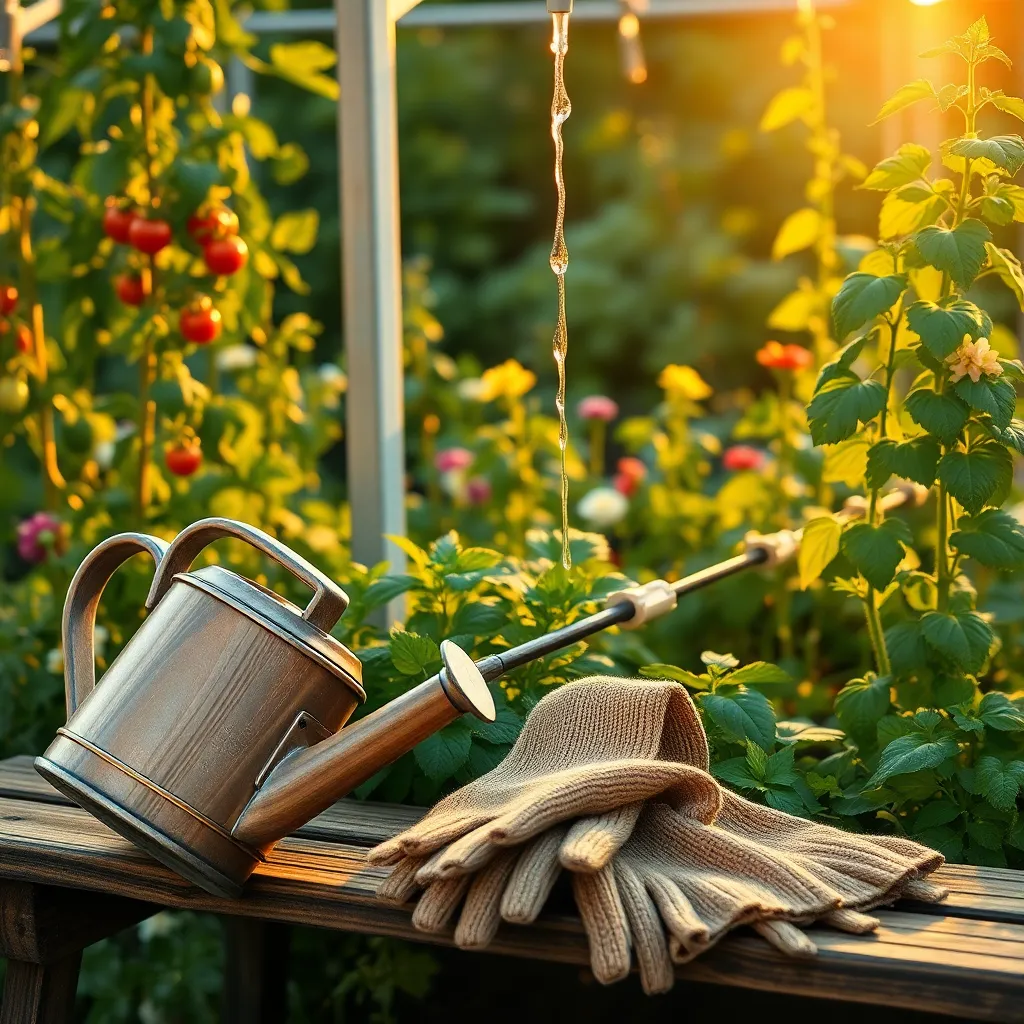The gentle murmur of a garden watering system can transform your gardening routine from a chore into a serene ritual. Whether you’re nurturing a few beloved houseplants or have sprawling garden beds brimming with life, a well-designed watering system is the lifeline that keeps your plants flourishing. For beginners, the thought of setting one up might seem daunting, yet it’s a journey worth embarking on. Experienced gardeners, too, will find fresh insights and modern techniques that can enhance even the most seasoned green thumb’s approach.
Watering is the heartbeat of any garden, ensuring that every leaf, bloom, and root gets the nourishment it needs to thrive. In this article, we’ll explore the essentials of setting up a watering system that suits your unique garden’s needs, from drip irrigation to sprinkler setups. You’ll learn how to tailor your system to your plants, conserve water, and save precious time, allowing you to enjoy more moments amidst your green oasis. No matter your level of expertise, creating an efficient watering system will elevate your gardening experience to new heights.
As we delve into the process, you’ll discover practical tips and step-by-step guidance to help you make informed decisions that align with your garden’s specific demands. We’ll demystify the various components and technologies available, empowering you to choose the best solutions for your space. By the end of this journey, you’ll be equipped with the knowledge and confidence to implement a watering system that not only supports your plants but also fits seamlessly into your lifestyle. Let’s embark on this path together, ensuring your garden remains a vibrant and thriving sanctuary.
Choosing Optimal Watering Methods

Choosing the right watering method for your garden depends on various factors such as plant type, soil composition, and climate. Drip irrigation systems are highly effective for delivering water directly to the root zones, minimizing water waste and reducing the risk of disease caused by wet foliage.
For beginners, using a simple watering can or hose with a spray attachment can provide adequate moisture control. Ensure that you water early in the morning or late in the evening to reduce evaporation and help your plants absorb the water efficiently.
Advanced gardeners might consider setting up an automated sprinkler system, which can be programmed to water at optimal times. This system is particularly useful for larger gardens or lawns, where manual watering would be time-consuming.
Consider the specific needs of your plants when choosing a watering method. Some plants, like succulents and cacti, require less frequent watering, so a drip system with adjustable flow rates could be ideal.
For clay soils that retain water longer, be cautious not to overwater, as it can lead to root rot. On the other hand, sandy soils drain quickly, and you might need to water more frequently, making a sprinkler system with timers a smart choice.
Essential Tools for Installation

To set up a garden watering system efficiently, you’ll need the right tools to ensure a smooth installation process. A sturdy garden spade is essential for digging trenches or holes for your irrigation pipes, allowing for precise placement and coverage.
Another indispensable tool is a pair of sharp pruning shears. These are useful for trimming any obstructive vegetation and ensuring that your watering lines can be installed without interference from plant growth.
Investing in a quality hose cutter will make your task easier when cutting hoses to the desired length. This tool ensures clean, straight cuts, which are necessary for leak-free connections in your garden watering system.
Additionally, a reliable wrench set is crucial for secure fittings and connectors. This will help you tighten connections properly, preventing any unwanted water leakage and ensuring your system functions optimally.
For more specialized installation, consider using a drip irrigation hole punch. This simple tool allows you to customize your watering system by easily adding emitters exactly where needed, providing targeted watering directly to plant roots.
Setting Up Timers and Controls

Automating your garden watering system with timers and controls can save you time and water. Begin by selecting a timer that fits your garden’s specific needs, such as a basic mechanical timer or a more advanced digital model.
Mechanical timers are straightforward and cost-effective, making them ideal for beginners. Simply set the time and duration, ensuring your plants receive consistent moisture without overwatering.
For a more sophisticated setup, consider digital timers with programmable options. These devices allow you to customize watering schedules based on plant types, seasonal changes, and local weather patterns.
Incorporating soil moisture sensors can further optimize your watering system. These sensors measure the moisture level in the soil, adjusting the schedule to prevent water wastage and ensure healthy plant growth.
To enhance system efficiency, link your timer to a rain sensor. This addition stops the watering process during rainfall, conserving water and preventing root rot in your plants.
Advanced gardeners might explore smart irrigation systems that connect to home networks via Wi-Fi. These systems offer remote control and integration with weather forecasts, providing precise watering tailored to current conditions.
Troubleshooting Common System Issues

One common issue with garden watering systems is uneven water distribution. This can often result from clogged sprinkler heads or emitters, which need regular cleaning to ensure proper function.
Another frequent problem is low water pressure, which can affect the entire system’s efficiency. Check for leaks in the tubing or connections, as these can significantly impact pressure levels.
Sometimes, incorrect timer settings can lead to overwatering or underwatering. Ensure your timers are set according to the specific needs of your plants, adjusting for seasonal changes.
For more advanced troubleshooting, consider the soil type in your garden. Sandy soils, for instance, may require more frequent watering than clay soils, which retain moisture longer.
- Check the system for leaks weekly.
- Clean sprinkler heads monthly to prevent blockages.
- Adjust timers seasonally based on plant growth and weather conditions.
Finally, if your system relies on a rain sensor, ensure it is functioning correctly to avoid unnecessary watering. Keeping sensors clean and free from debris will help maintain their accuracy.
Maintenance Tips for Longevity

Regular maintenance is essential to ensure the longevity of your garden watering system. Start by checking the system for leaks or clogs every few weeks, as these can affect water distribution and plant health.
Inspecting sprinkler heads and drip lines can prevent potential issues before they escalate. Replace any damaged parts promptly, and ensure that all connections are secure to maintain optimal water flow.
Flush the system periodically to remove any debris or mineral build-up that could block water pathways. This is especially important in areas with hard water, where mineral deposits can form quickly.
During the growing season, adjust the watering schedule based on weather conditions to prevent overwatering or underwatering. In hotter months, consider watering in the early morning to reduce evaporation and ensure plants receive adequate hydration.
For advanced maintenance, integrate a rain sensor to your system to automatically adjust watering based on rainfall. This not only conserves water but also protects plants from excess moisture, which can lead to root rot.
Conclusion: Growing Success with These Plants
In setting up a harmonious “garden watering system” for your relationships, we explored five key concepts: communication as the essential lifeline, the importance of consistent effort, nurturing individual growth, balancing give and take, and embracing change with resilience. These elements collectively create a thriving environment for love and connection to flourish.
As a next step, take a moment to assess one area where your relationship could use a little more attention or improvement, and commit to taking action today. Whether it’s scheduling regular check-ins or simply expressing appreciation more frequently, small, intentional actions can make a significant difference.
Remember, relationships require ongoing care and consideration, much like a garden. To keep these insights at your fingertips, save or bookmark this article as a valuable resource to revisit whenever you need a reminder or a boost.
Looking ahead, your commitment to cultivating these foundational elements will pave the way for enduring relationship success. Embrace the journey with open hearts and watch as your connections blossom beyond expectations.

